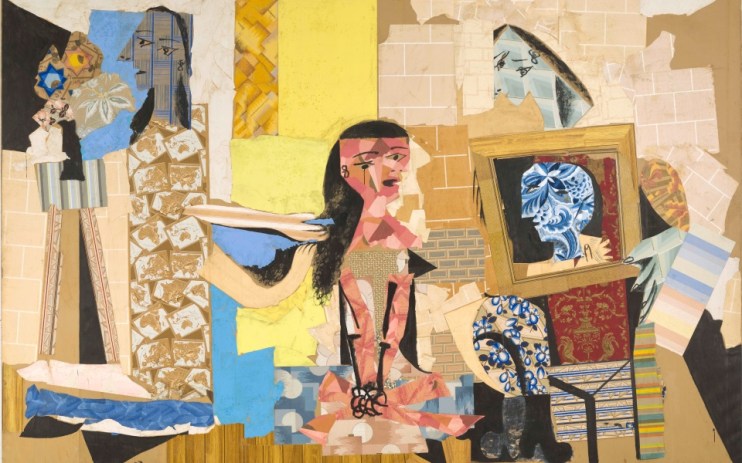Picasso and Paper at the Royal Academy review: A daft name adorns a roller-coaster of form and imagination

With Picasso and Paper, the Royal Academy confirms what we have suspected all along: the diminutive Spaniard did, in fact, make use of the material we know as ‘paper’.
Sometimes he drew on it, other times he cut it into funny shapes. You could never tell what he was going to do next, when it came to paper. Roll it into a ball and push it down a hill? Use it to jot down a reminder of his upcoming dental appointment? Your guess is as good as mine.
He also, in the name of full disclosure, used lots of other materials – bronze, canvas and celluloid, to name exactly three – and you can find examples of those here, too. In fact, the only problem with this otherwise brilliant exhibition is the misnomer on the promotional materials, which hints at something far narrower and more prosaic than the rollercoaster of form and imagination that waits inside the RA’s main galleries.
The point, I think, is to demonstrate the evolution of the artist through his more ‘disposable’ works (if you can call doodles worth millions ‘disposable’). The exhibition starts with cutouts of a dove and a dog, for instance, made when Picasso was eight or nine (along with some text explaining that he could draw before he could speak) and rattles on in more-or-less chronological order until his final days, when he was still snipping paper into odd shapes.
Throughout the vast space there are dozens upon dozens of preparatory sketches, some on scraps of paper, others in notebooks lined up in vitrines. When taken en masse they suggest, if you squint hard enough, the genesis of cubism, with facets from multiple drawings worked into single paintings that give an almighty two fingers to the conventional laws of perspective.
A handful of pieces provide what you might call the missing link between these sketches and his cubism-proper: a folded, scrawled, snipped piece of paper that’s a close cousin to his bronze casts; an operatic costume made of concertinaed pieces of card.
Other pieces are interesting mostly by association. I wonder what Picasso would make of the fetishisation of every thing he ever touched, such as the tiny cutout of a pipe that’s lovingly sandwiched between two sheets of glass (actually, I think I know – he’d feign haughty indifference and then try to have sex with a teenager).
Picasso and Paper is a curious thing, the artist’s work forever straining at the exhibition’s self-imposed parameters. One minute you have a series of pencil-on-paper drawings – brilliant portraits of Stravinsky and Renoir that demonstrate Picasso’s exceptional economy of line, for instance – which fit the remit, the next a bunch of oil paintings from his blue period that are at best tangentially related.
But what the hell, it’s a whole load of Picassos. His ceaseless creativity, his commitment to drawing on absolutely everything is thrilling, and it’s perhaps fitting that the Royal Academy fails to contain his chaotic energy. Pencil in an entire afternoon.
